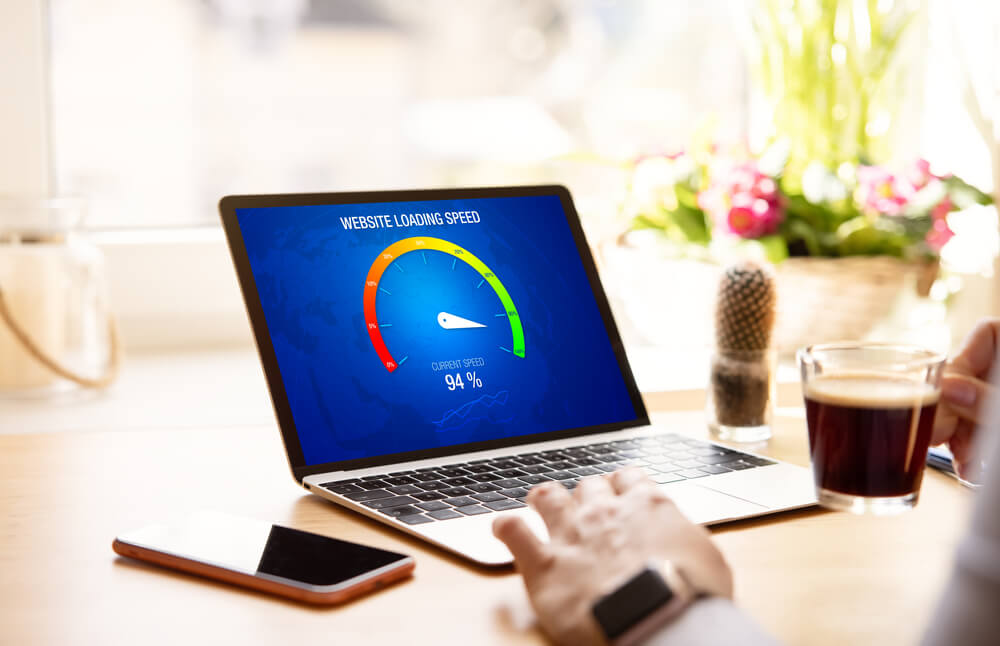
Optimize Site Speed: 5 Advanced Techniques for Technical SEO
Speed is critical in mobile technical search engine optimization (SEO) because it directly influences rankings. A faster-loading website also aligns with search engine preferences and enhances user satisfaction and engagement.
This guide covers five mobile technical SEO practices to improve site speed:
 The following are five updated technical SEO strategies to boost site speed and ranking for mobile search:
The following are five updated technical SEO strategies to boost site speed and ranking for mobile search:
 Monitoring market data such as site speed encourages consistent performance and user satisfaction. Regularly testing site speed using tools, such as Google PageSpeed Insights, identifies bottlenecks and prompts necessary improvements.
Continuous testing also fine-tunes codes, server configurations, or content delivery methods. It sustains optimal speed and promotes better SEO, such as user engagement and search rankings.
Additionally, regular assessments and improvements help you adapt to evolving web standards, user expectations, and search engine algorithms. Websites remain competitive and deliver a seamless and swift user experience.
Here are the best practices for monitoring site speed and making continuous improvements:
Monitoring market data such as site speed encourages consistent performance and user satisfaction. Regularly testing site speed using tools, such as Google PageSpeed Insights, identifies bottlenecks and prompts necessary improvements.
Continuous testing also fine-tunes codes, server configurations, or content delivery methods. It sustains optimal speed and promotes better SEO, such as user engagement and search rankings.
Additionally, regular assessments and improvements help you adapt to evolving web standards, user expectations, and search engine algorithms. Websites remain competitive and deliver a seamless and swift user experience.
Here are the best practices for monitoring site speed and making continuous improvements:
- Advanced caching techniques
- Image optimization and compression
- Lazy loading and asynchronous loading
- Accelerated Mobile Pages (AMP)
- Server and hosting optimization
Watch this video to learn how Digital Authority Partners tackles Technical SEO!
Analyzing Current Site Speed Performance
Understanding different metrics is crucial to comprehensively assess site speed performance. First contentful paint (FCP), largest contentful paint (LCP), time to first byte (TTFB), and cumulative layout shift (CLS) provide insights into various aspects of page loading and user experience. Analyzing these metrics helps pinpoint areas needing improvement. These might be initial rendering times, content loading, server responsiveness, or visual stability. Enhancing these factors promotes targeted optimization efforts influencing the overall site speed. Consider these tips for analyzing site speed:- Use various tools, such as Google PageSpeed Insights, for a well-rounded analysis of loading times, optimization suggestions, and performance grades.
- Pay attention to key metrics such as FCP, LCP, TTFB, total blocking time, and CLS. These offer insights into page loading, interactivity, and visual stability.
- Assess the site’s speed performance separately for mobile and desktop to optimize and customize the experience for each platform.
- Follow the recommendations of these tools. They often offer suggestions and opportunities for improvement. Examples include optimizing images, leveraging browser caching, minimizing redirects, or improving server response times.
- Monitor site speed over time to spot trends and changes. Track improvements or regressions in speed performance and evaluate the effectiveness of optimizations implemented.
Advanced Techniques for Technical SEO
 The following are five updated technical SEO strategies to boost site speed and ranking for mobile search:
The following are five updated technical SEO strategies to boost site speed and ranking for mobile search:
1. Apply Advanced Caching Techniques
Advanced caching techniques significantly reduce load times and elevate user experience by storing frequently accessed data for quicker retrieval. Websites reduce server requests by caching static elements, such as images, CSS files, and scripts, expediting page loading for returning visitors. Using content delivery networks and intelligently caching dynamic content optimize performance by making personalized data readily accessible. Collectively, these strategies foster a more responsive and engaging browsing experience, boosting user satisfaction and retention rates. How do you perform advanced caching? These techniques help:- Instruct a user’s browser to store static resources locally after the initial visit. It loads the website faster during subsequent visits because the browser only retrieves cached assets instead of downloading them again.
- Set appropriate caching headers in the website’s HTTP response. These effectively cache elements for a specified duration, reducing load times.
- Consider server-side caching to store frequently accessed data or dynamically generated content.
2. Prioritize Image Optimization and Compression
Optimizing images balances visual quality and file size, directly influencing website performance. For example, reducing image file sizes through compression speeds up the load time. Smaller images load faster, particularly on mobile devices or areas with slower internet. Prioritizing image optimization ensures that websites remain visually appealing while delivering faster load times, retaining user engagement, and improving SEO performance. Maximize the technical SEO benefits for mobile search with these techniques:- Use tools such as Adobe Photoshop, GIMP, or online platforms such as TinyPNG, ImageOptim, or Compressor.io to compress images without significant quality loss.
- Select appropriate image formats such as JPEG, PNG, WebP, or SVG based on the type of content. JPEG is suitable for photographs, PNG for images requiring transparency, WebP for modern browsers supporting next-generation formats, and SVG for vector graphics.
- Resize images to the optimal resolution without oversizing. Avoid using high-resolution images where lower resolutions suffice. Larger dimensions increase file sizes and slow loading times.
- Automate image compression with content management system (CMS) plugins such as Smush for WordPress or ImageOptim for Mac. This reduces manual effort and optimizes all uploaded images directly in the CMS.
- Use responsive image techniques, such as srcset or <picture> element, to deliver different image sizes based on the user’s device and viewport.
3. Leverage Lazy Loading and Asynchronous Loading
Implementing lazy loading for images and asynchronous loading for scripts substantially enhances website performance. Lazy loading defers displaying off-screen or below-the-fold images, initially only allowing the visible content to load. This strategy reduces initial page load times because the system only fetches the essential content. It also enhances user experience by providing faster initial renderings and reducing data usage. On the other hand, asynchronous loading allows non-essential scripts to load in the background while critical content loads first. It prevents render-blocking resources from slowing down the initial page load. It also enhances speed for a smoother and more responsive browsing experience. Consider these top techniques for faster page rendering and improved user engagement:- Reduce the number of HTTP requests by combining and minifying CSS, JavaScript, and HTML files. Fewer requests mean quicker loading times as the browser retrieves fewer resources.
- Prioritize loading above-the-fold content to swiftly display critical information to users. These include text, images, and other essential assets.
- Leverage browser caching by setting appropriate cache-control headers for static resources. This instructs the browser to store resources locally and reduces redownloading on subsequent visits, resulting in faster rendering for returning users.
4. Use AMP
AMP is an open-source framework that creates fast-loading webpages for mobile devices. It delivers a streamlined page by simplifying HTML and CSS and restricting JavaScript. Learn more about AMP’s pros and cons on mobile SEO below:Advantages of Implementing AMP
- Improved mobile page speed. AMP enhances mobile page loading times, offering a faster and more responsive user experience. Shorter loading times positively influence user engagement and decrease bounce rates.
- Enhanced visibility in search results. Google prioritizes AMP-enabled pages in search results, displaying them in a special carousel or with a lightning bolt icon. Adopting AMP increases visibility and attracts more clicks.
- Increased mobile SEO performance. Faster loading times and better user experience improve mobile search optimization. They lead to higher rankings and better search visibility on mobile devices.
Disadvantages of Implementing AMP
- Restrictions on design and functionality. AMP restricts certain design elements and functions, limiting the customization and features available on web pages. These might affect branding and user engagement.
- Challenges with implementation. AMP is complex and time-consuming, especially for larger or enterprise websites. It requires significant adjustments to existing code and introduces a learning curve for developers.
- Potential traffic loss. Since AMPs often keep users within Google’s ecosystem and load content quickly without users visiting the website, it might reduce the traffic to the main page. It might then affect ad revenue or other monetization strategies.
5. Consider Server and Hosting Optimization
Choosing the right hosting solution and optimizing server settings affect website speed and performance. A reliable hosting provider with adequate resources and optimized server configurations provides quicker response times. Selecting the ideal hosting solution and optimizing server settings are crucial for optimal website speed and responsiveness. These two strategies directly influence user satisfaction and engagement. Several factors concerning server and hosting selection affect mobile technical SEO. These include the following:Server Response Time
It is the time it takes for the server to respond to a request from a user’s browser. An optimal server response time is crucial for a fast-loading website. Factors affecting it include server hardware, software configurations, network latency, and server load. On the other hand, efficient server configurations, resource allocation, and streamlined code speed it up.Resource Allocation
Adequately allocating resources such as CPU, RAM, and disk space helps your IT infrastructure manage website traffic and processes. Under-allocating assets often leads to slower performance, increased downtime, and higher server response times.Shared versus Dedicated Hosting
Shared hosting involves multiple websites sharing resources on the same server. Although cost-effective, it slows down your site’s performance when others on the server experience high traffic or resource usage. Dedicated hosting provides exclusive use of server resources to a single website. It is more expensive but results in faster performance and more consistent server response times. Optimizing server configurations, ensuring adequate resource allocation, and selecting the right hosting solution are vital for faster response times and optimal website performance.Monitoring Site Speed and Making Continuous Improvements
 Monitoring market data such as site speed encourages consistent performance and user satisfaction. Regularly testing site speed using tools, such as Google PageSpeed Insights, identifies bottlenecks and prompts necessary improvements.
Continuous testing also fine-tunes codes, server configurations, or content delivery methods. It sustains optimal speed and promotes better SEO, such as user engagement and search rankings.
Additionally, regular assessments and improvements help you adapt to evolving web standards, user expectations, and search engine algorithms. Websites remain competitive and deliver a seamless and swift user experience.
Here are the best practices for monitoring site speed and making continuous improvements:
Monitoring market data such as site speed encourages consistent performance and user satisfaction. Regularly testing site speed using tools, such as Google PageSpeed Insights, identifies bottlenecks and prompts necessary improvements.
Continuous testing also fine-tunes codes, server configurations, or content delivery methods. It sustains optimal speed and promotes better SEO, such as user engagement and search rankings.
Additionally, regular assessments and improvements help you adapt to evolving web standards, user expectations, and search engine algorithms. Websites remain competitive and deliver a seamless and swift user experience.
Here are the best practices for monitoring site speed and making continuous improvements:
- Conduct periodic performance audits using Google PageSpeed Insights. Track site speed metrics, identify slowdowns, and pinpoint areas needing improvement.
- Establish benchmarks for site speed based on industry standards or user expectations. Continuously monitor these to gauge and improve performance.
- Use tools with real-time data on actual user experiences.
- Pay special attention to mobile site speed and user experience. With more users accessing websites on mobile devices, optimizing mobile performance retains visitors and creates a positive user experience.
- Conduct A/B tests to assess your SEO strategy’s impact on site speed and user engagement.
Summing Up
The abovementioned advanced techniques significantly improve site speed. They reduce latency, enhance user experience, and positively affect technical SEO by improving crawlability and user engagement metrics. However, continuous attention to site speed is vital in any SEO strategy. It directly influences search rankings, user satisfaction, and overall website performance. In what ways does continuous site speed improvement contribute to your overall digital marketing success? Contact Digital Authority Partners (DAP) to get your answers and support for mobile technical SEO, digital marketing, and beyond.Want To Meet Our Expert Team?
Book a meeting directly here



